In modern football, tactical concepts play a significant role in shaping the outcome of games. One of the most effective and widely used strategies is the third-man principle. This clever maneuver, popularized by Roberto De Zerbi, involves three players working together to bypass an opponent’s press or defensive structure, creating opportunities to progress the ball or exploit spaces. The third-man principle isn’t just a flashy trick—it’s a fundamental tool in any team’s tactical system.
What is the Third-Man Principle?
The third-man principle works by involving three players to bypass an opponent’s defensive block. Imagine Player A has the ball and wants to pass it to Player C, who is in a free and more advanced position. However, an opponent will block the direct passing lane from Player A to Player C. To overcome this, Player A first passes the ball to Player B, who is positioned closer and has an open passing lane to Player C. Player B then quickly relays the ball to Player C, who is now able to receive it without interference.
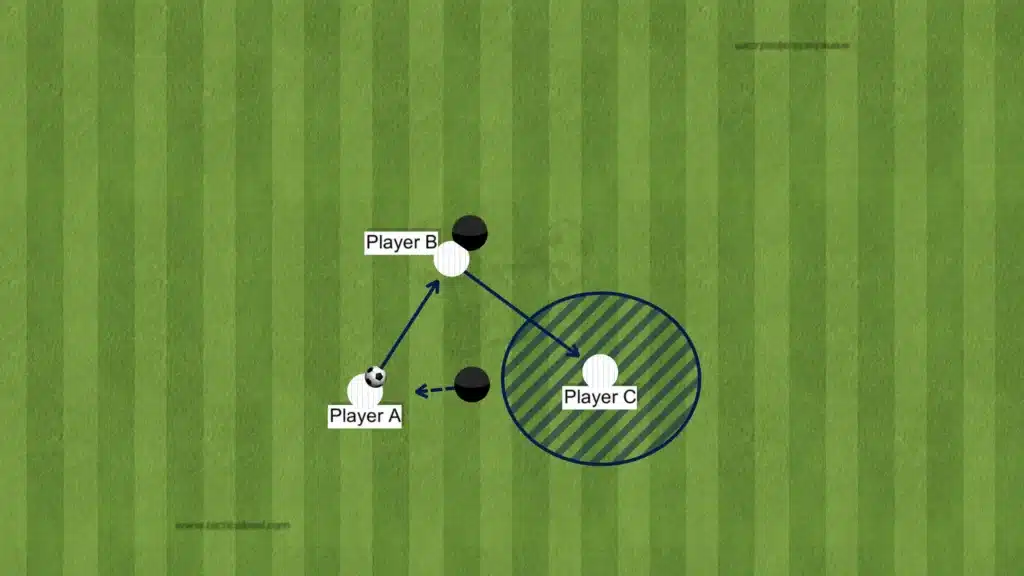
Player B’s role is crucial in this sequence, as their involvement opens up the opportunity for Player C to receive the ball in a favorable position that Player A could not reach directly. This clever combination exploits gaps in the opposition’s defensive structure, allowing the attacking team to progress the play smoothly.
The brilliance of the third-man principle lies in its simplicity and effectiveness. By involving an extra player, teams can disrupt compact defensive structures, escape pressing traps, and maintain control of possession. It also requires players to read the game intelligently, time their movements precisely, and execute passes with accuracy.
Why is it Effective?
The third-man principle is highly effective because it creates numerical and positional advantages. By using a third player, teams can manipulate the positioning of defenders, forcing them to shift and creating gaps in their structure. This principle is especially useful against high-pressing teams, as it allows the ball to move quickly and out of areas of congestion.
Moreover, the principle encourages fluidity in movement. Players involved in the sequence often rotate positions, keeping defenders guessing and creating unpredictability in the attack. This dynamic approach keeps possession alive and allows teams to transition seamlessly between phases of play.
Practical Examples of the Third-Man Principle
The third-man principle is, for example, effective when a striker presses the goalkeeper, blocking a direct pass to the center-back. The goalkeeper can instead pass to a midfielder, who quickly relays the ball back to the free center-back. This creates space for the center-back to play forward while bypassing the striker’s press.
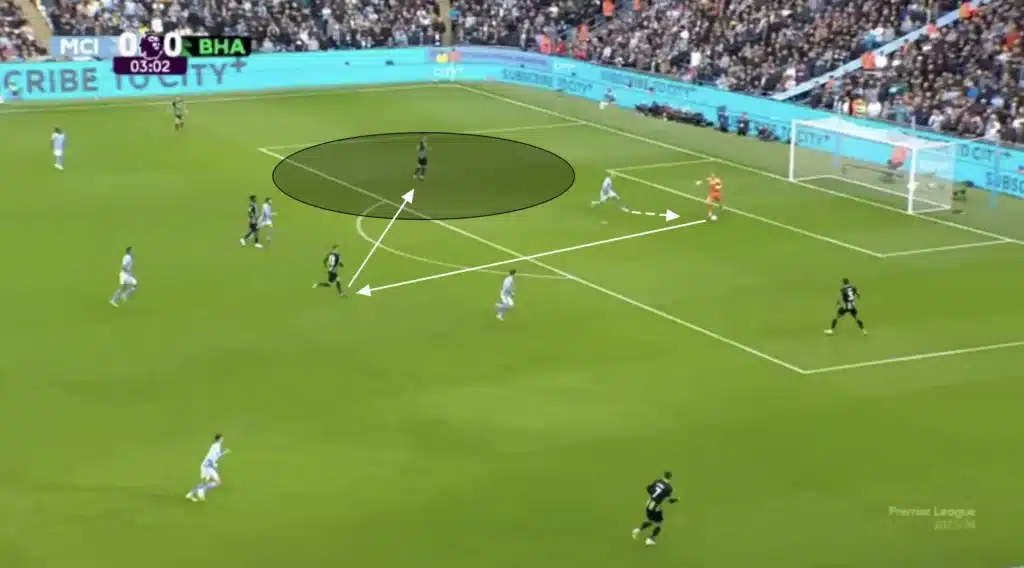
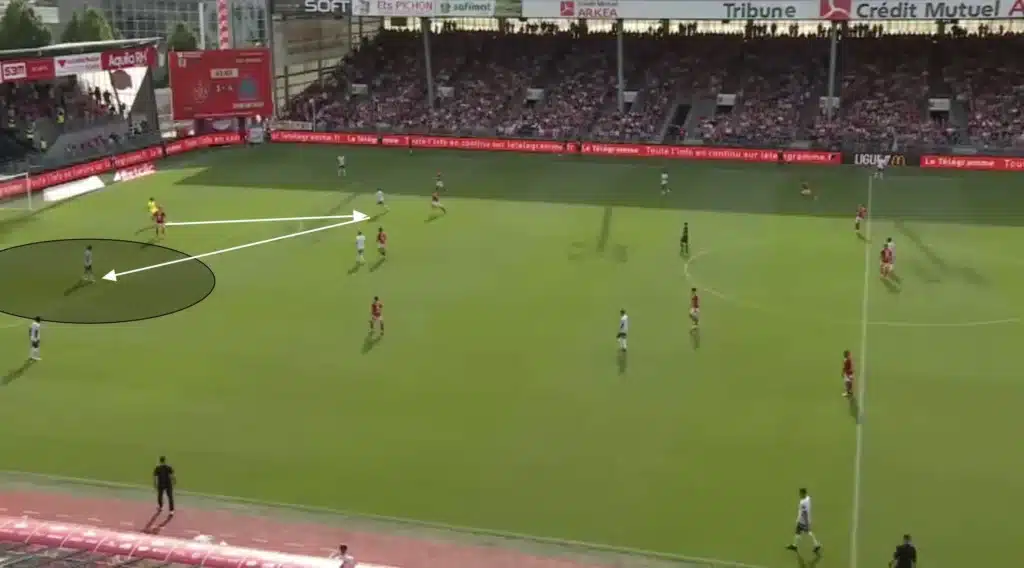
The third-man principle is also effective for finding a free holding midfielder in between the lines. A center-back can pass the ball forward to a dropping attacking midfielder, drawing pressure from the opposition’s midfielders. The attacking midfielder then quickly plays a pass to the holding midfielder, who now has time and space to dictate play. This movement not only disrupts the opponent’s defensive shape but also creates opportunities to progress the ball into dangerous areas.
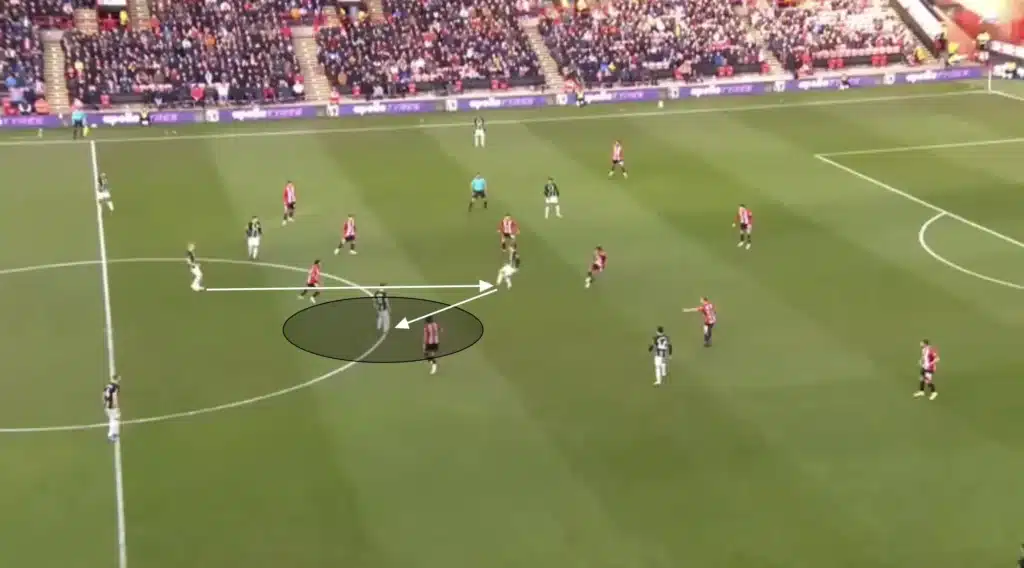
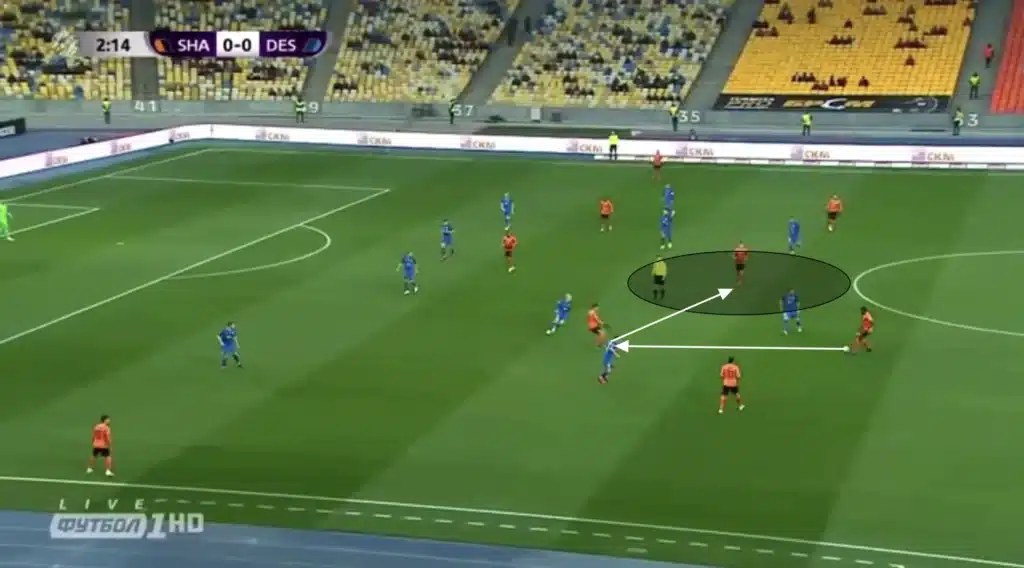
This principle is also seen in the final third. For example, a winger may pass the ball to a central midfielder, who then threads a pass to a striker making a run behind the defensive line. The involvement of the third player allows the attacking sequence to flow smoothly and catch the opposition off guard.
How to Train the Third-Man Principle
To effectively use the third-man principle, players need to develop their positional awareness, decision-making, and technical skills. Coaches often design training drills to simulate game-like situations. Small-sided games, rondos, and positional exercises are excellent for practicing this concept. These drills teach players how to create passing lanes, anticipate movement, and execute quick, accurate passes.
Players must also learn to time their runs and movements perfectly. A mistimed run or pass can disrupt the sequence and allow the opposition to regain possession. Training sessions that focus on coordination and communication help players understand their roles in the third-man principle and improve their execution during matches. One training drill that focuses on using third-man combinations to circulate the ball will be explained below.
Third-Man Training Drill
The drill starts with two teams of usually three or four players in a rectangular area. There will be two goals on one side of the area, and on the other one, there will be two neutral players with a cone or mannequin barrier between them. The two neutral players should be the center-backs, and the barrier between them represents an opposition striker who closes the passing lane between them.
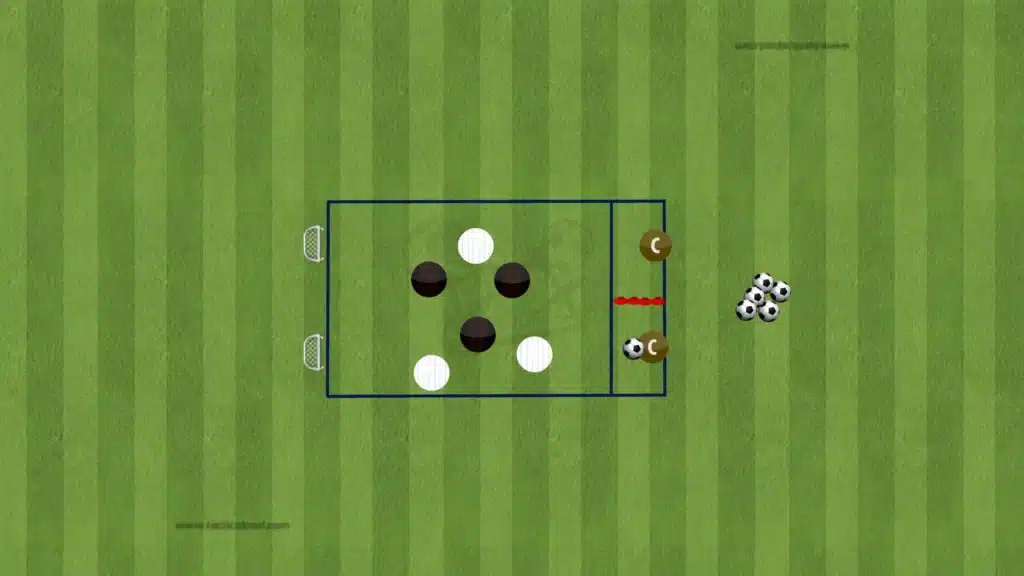
The play always starts from the two center-backs, and the goal for the team in possession is to move the ball from the center-backs up to the other side and score in the goals. The defending team’s goal is to stop the attacking team from scoring in the goals. When the defending team wins the ball, they have to restart possession with the center-backs before they can score.
The main way to progress the ball from the center-backs to the goals will be to use different third-man combinations. If the team, for example, wants to move the ball from one center-back to the other, a player will have to drop and connect as a third-man.
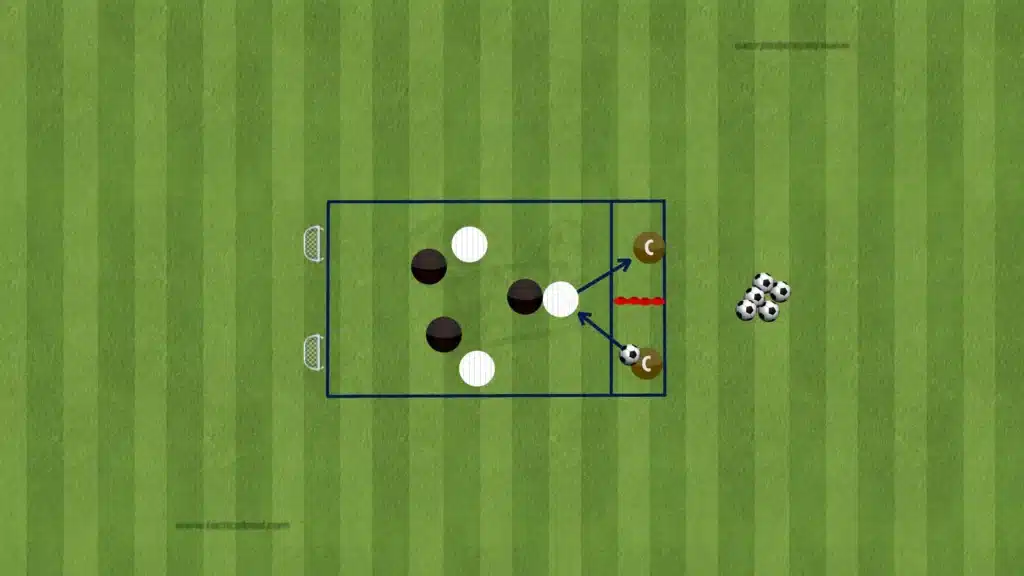
If a defending player presses one of the neutral center-backs, an attacking player will be free in the middle, and a third-man combination can be used to find this player.
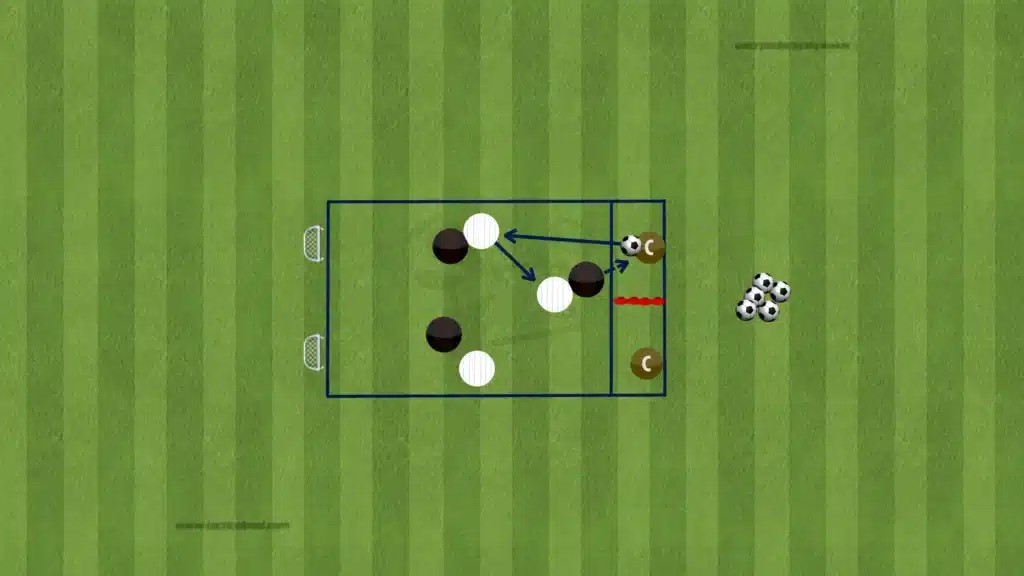
The benefit of this drill is that it simulates match situations and is highly customizable. There are many ways to change this drill to make it more suitable for your environment. You could add a neutral player in the middle, fullbacks on each side, or different rules to induce desirable behaviors. When it comes to customization, the sky is the limit for this drill.
Conclusion
The third-man principle is a simple yet highly effective tactical tool that elevates a team’s ability to control the game and unlock defenses. By involving a third player to connect passes and manipulate opposition structures, teams can overcome pressing traps and create scoring opportunities. Whether it’s used in the build-up phase, the midfield, or the final third, this principle exemplifies the intelligence and creativity that define modern football tactics.
Mastering the third-man principle requires precision, awareness, and teamwork, but when executed well, it can be a game-changing strategy. Teams that understand and utilize this principle effectively will always have the upper hand in breaking through even the toughest defensive setups.
